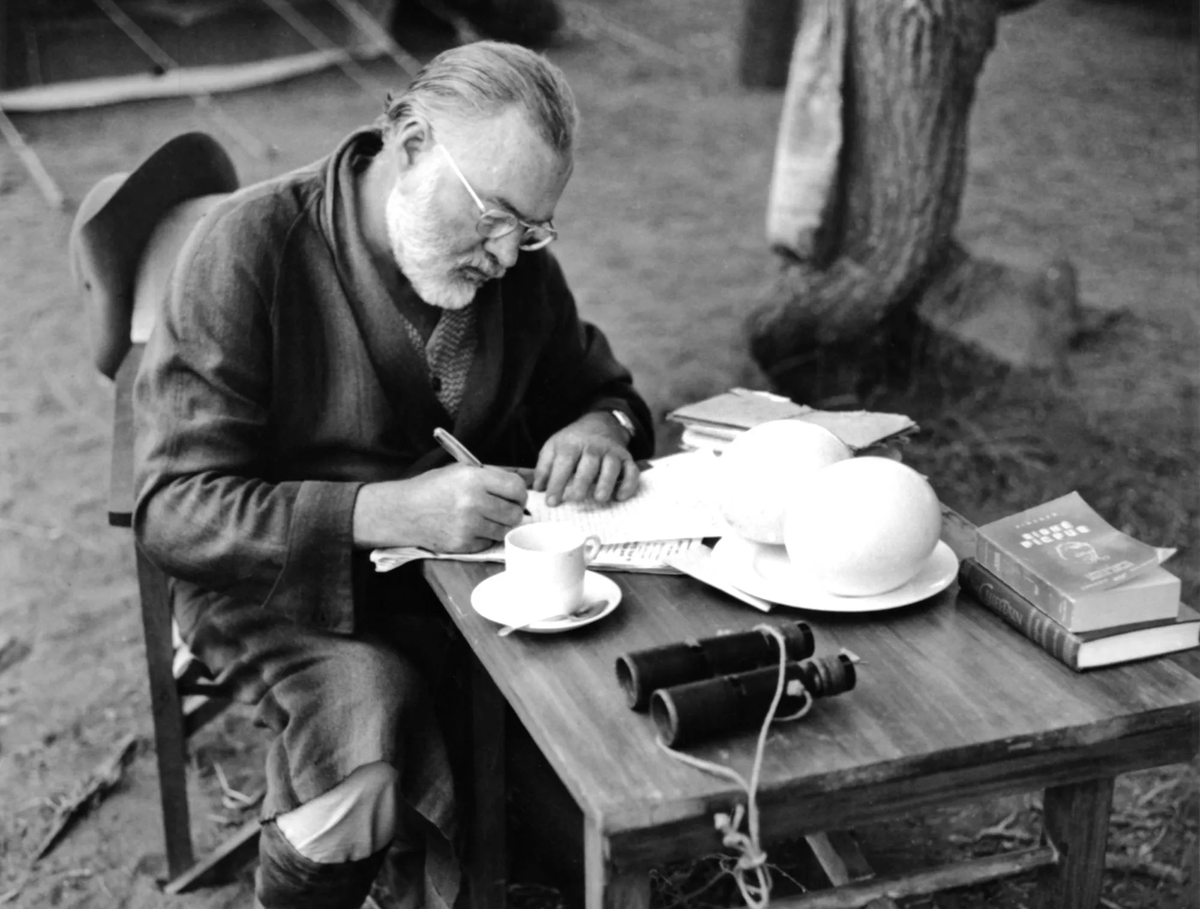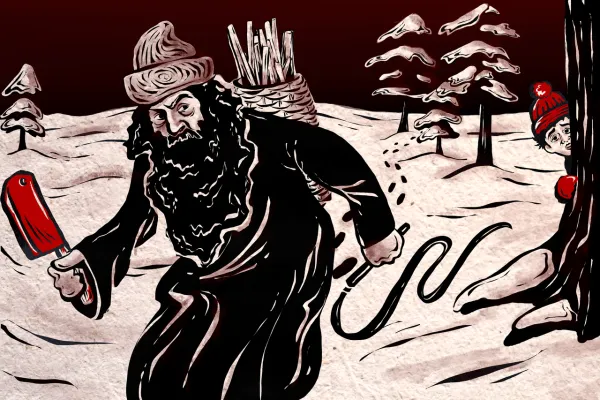These authors liked to write while they were hungover

James Joyce would rise late, after an inebriated evening spent belting out songs at the local boozer, and get his writing done in the early afternoon. Cheever did much the same, but got out of bed earlier. Hemingway would stay up boozing but be at his typewriter by six the following morning. He famously wrote standing up because his leg had been injured in the war, he said, but also to stop himself drifting off. Francis Bacon used to paint hungover, though not because his mind was sufficiently numb to be able to concentrate, but because it was revved up: ‘I often like working with a hangover,’ he said, ‘because my mind is crackling with energy and I can think very clearly.’ Patricia Highsmith would hit the vodka before starting work, not to perk her up but to reduce her energy levels, which veered toward the manic. She also surrounded herself with pet snails, in the hope that some of the slowness would rub off. (via LitHub)
These 7,000-year-old mummies don't share any DNA with modern homo sapiens

Between 14,800 and 5,500 years ago, during what is known as the African Humid Period, the Sahara Desert – known for being one of the driest places on Earth – actually had enough water to support life. Back then, it was a savannah that early human populations settled in to take advantage of the favorable conditions. Among them was a mysterious people who lived in what is now southwestern Libya and should have been genetically Sub-Saharan — except, upon a modern analysis, their genes didn’t reflect that. Led by archaeogeneticist Nada Salem from the Max Planck Institute for Evolutionary Anthropology, a team of researchers analyzed the genes of two 7,000-year-old naturally preserved mummies of Neolithic female herders from the Takarkori rock shelter. Though genetic material does not preserve well in arid climates, which is why much about ancient human populations in the Sahara remains a mystery, there was enough fragmented DNA to give insights into their past. (via Popular Mechanics)
French semaphore towers were the 1800's version of the internet and they got hacked

Before there were computers, bandits roamed another type of information superhighway. They were towers known as optical telegraphs or semaphore telegraphs, and they were common in parts of Europe, and particularly in France, as early as the 1790s. Each tower had a mast and a pair of movable arms attached to it — those arms were called the “semaphore.” The operator of the tower could position those arms into certain positions, each one corresponding to a number or letter. Towers like these dotted the landscape, with the operator of each one able to see the next through a telescope. It was reserved for government use, and that didn’t sit well with a pair of bankers, François and Joseph Blanc. The Blanc brothers traded government bonds at the exchange in the city of Bordeaux, where information about market movements took several days to arrive from Paris by mail coach. Traders who could get the information more quickly could make money by anticipating these movements. And the semaphore network seemed like a perfect way to get that information flowing faster. (via Now I Know)
Hi everyone! Mathew Ingram here. I am able to continue writing this newsletter in part because of your financial help and support, which you can do either through my Patreon or by upgrading your subscription to a monthly contribution. I enjoy gathering all of these links and sharing them with you, but it does take time, and your support makes it possible for me to do that. I also write a weekly newsletter of technology analysis called The Torment Nexus.
He created a micro-nation called Rose Island on a man-made platform in the Adriatic Sea

The Republic of Rose Island was a short-lived micronation created on a man-made platform in the Adriatic Sea, 11 kilometres off the coast of Italy. It was the brainchild of Giorgio Rosa, an engineer from Bologna with links to the former Republic of Salo, an attempt to create a free state in Italy during World War II. His aim was to create a state that was completely independent from Italy, would have its own system of taxation and would finance itself. This manmade platform was intended as a kind of utopia after Thomas More: a model, free micro-nation detached from the Italian state. It had its own flag, its own currency (the Mill), its own postage stamps and even its own official auxiliary language, Esperanto. Word had it that the island was a haven for casinos, bordellos and a pirate radio station. That it was the hub of an international spy ring. That it was even a Soviet submarine base. But none of this was true. (via Rose-Island.co)
The King of Sweden ordered twins to drink coffee and tea to see which one would die first

Sweden's King Gustav III viewed coffee consumption as a threat to the public health and was determined to prove its negative health effects. To this end he ordered a scientific experiment to be carried out in what has been loosely referred to as the first randomized controlled clinical trial. The king ordered the experiment to be conducted using a pair of identical twins. Both of the twins had been tried for the crimes they had committed and condemned to death. Their sentences were commuted to life imprisonment on the condition that one of the twins drink three pots of coffee, and the other drink the same amount of tea, every day for the rest of their lives. The tea drinking twin died first at the age of 83, long after the death of Gustav III, who was assassinated in 1792. The age of the coffee-drinking twin at his death is unknown, as both doctors assigned by the king to monitor this study predeceased him. (via Wikipedia)
Driving a Bugatti Chiron at more than 400 kilometres per hour on the Autobahn

Acknowledgements: I find a lot of these links myself, but I also get some from other newsletters that I rely on as "serendipity engines," such as The Morning News from Rosecrans Baldwin and Andrew Womack, Jodi Ettenberg's Curious About Everything, Dan Lewis's Now I Know, Robert Cottrell and Caroline Crampton's The Browser, Clive Thompson's Linkfest, Noah Brier and Colin Nagy's Why Is This Interesting, Maria Popova's The Marginalian, Sheehan Quirke AKA The Cultural Tutor, the Smithsonian magazine, and JSTOR Daily. If you come across something interesting that you think should be included here, please feel free to email me at mathew @ mathewingram dot com



